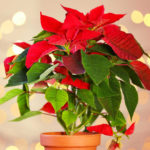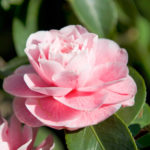Learn how to easily grow peas in pots. Using pots and buckets to garden, is a great way to garden in small areas.
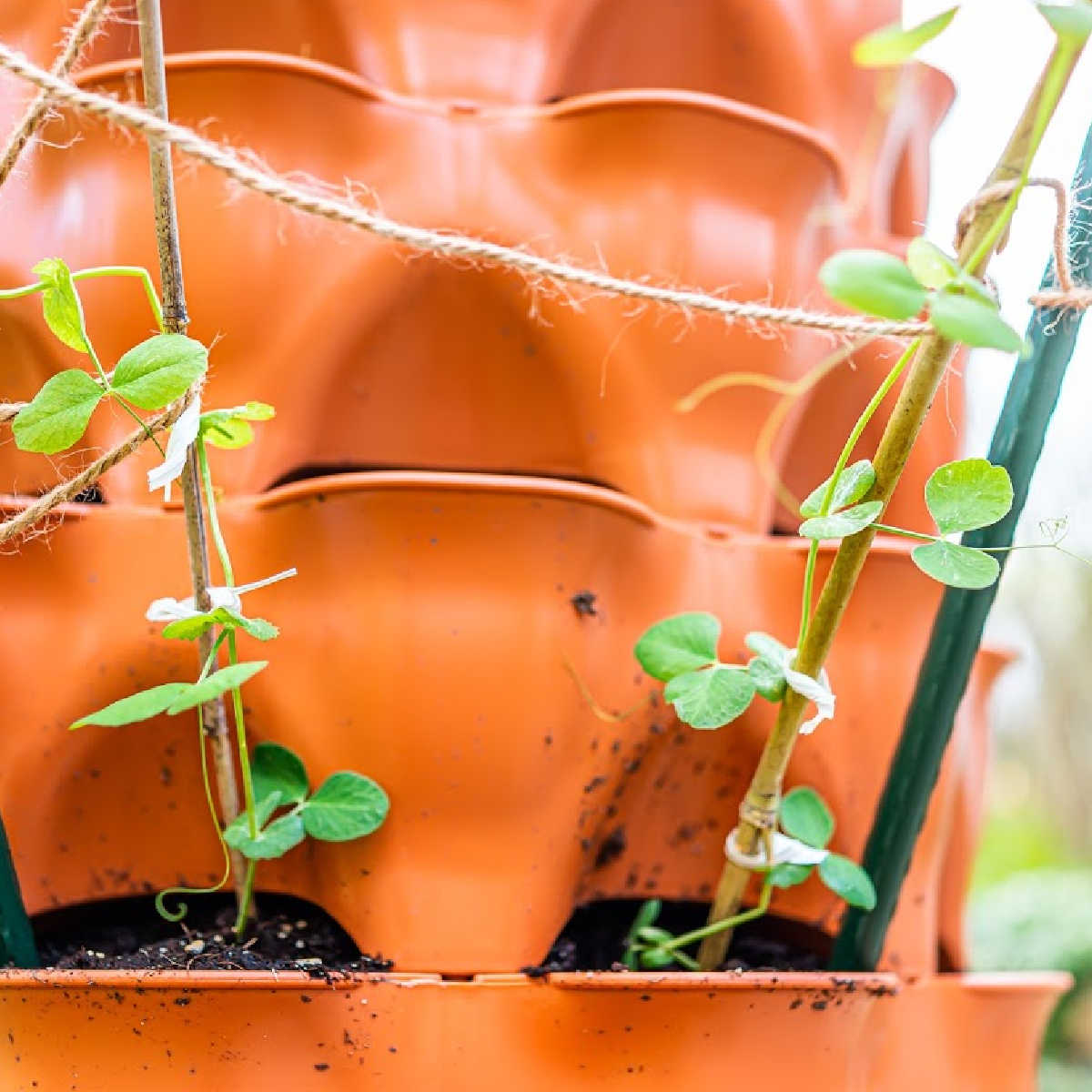
If you love fresh peas and like to garden, consider growing your own fresh peas.
If you don’t have a large gardening area, you might be wondering how to grow peas in a small space. Growing peas in pots or containers is the perfect solution.
This is an easy method to grow the peas you desire without a lot of fuss, space needs or expense. Read on to learn how to grow peas in pots.
Table of Contents
Favorite Peas for Containers
The scientific name for peas is Pisum sativum. In general, there are three main types of peas, but peas can be called any of the following common names that include:
- Shelling Peas
- Snap Peas
- Garden Peas
- Snow Peas
- Matar
- English Peas
- Sweet Peas
- Chinese
- Green Peas
- Sugar Peas or Sugar Snap Peas
- Batani & a few others
Don’t worry about the above names, as the usual kinds of peas that may be planted in pots or other containers will fall within three pea types. These include:
- Snow Peas
- Garden or Shelling Peas
- Snap or Sugar Snap Peas
Note Regarding Variety Choice & Pot Size
Along with choosing the type of pea, you should consider the variety as well.
Peas come in large/tall or shorter bush varieties or they can be found in smaller varieties.
The size and shape of your container or pot will depend on the space you have and what type of peas you are planting. Climate and other factors also come into play when determining pot/container style.
🌱 When to Plant
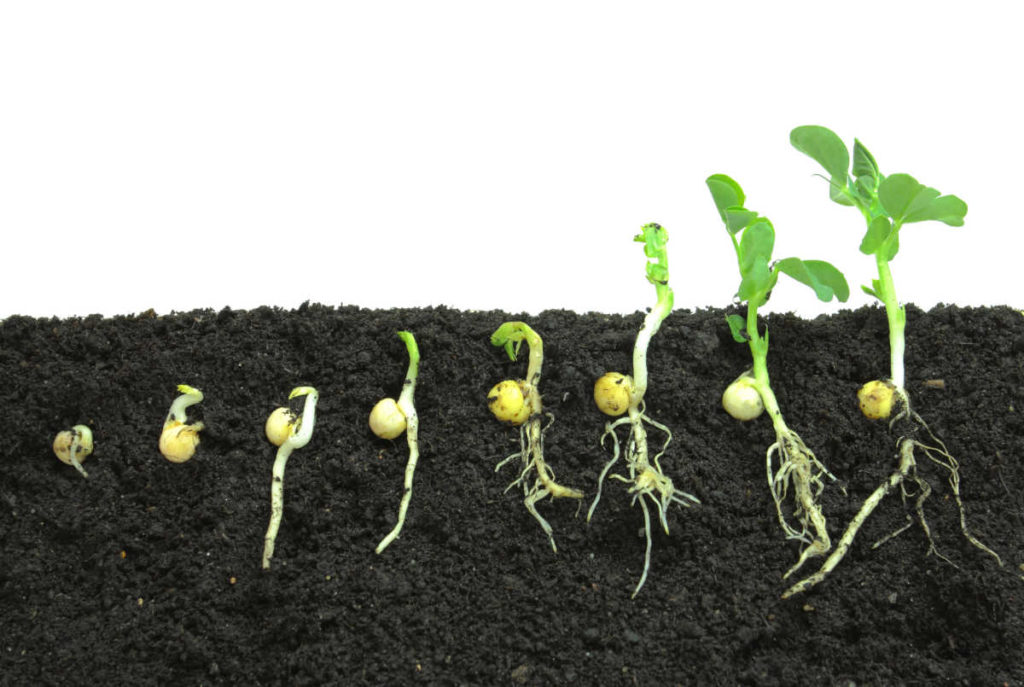
Peas usually grow well in the early spring months when the temperature stays above 40 degrees and averages 60 degrees and slightly above.
These vegetables prefer moderate shade, and the plant should be protected from too much harsh sunlight, extreme temperatures, and dry conditions.
If the summers are typically cooler and there is enough shade in your yard, then peas can be planted later if wanted. If weather tends to be too extreme either way, move the plants inside or into a protected space when needed.
Container Requirements
Peas that are grown in containers have more risk of draining out valuable and needed nutrients in the soil that peas need for proper growth and health.
The peas should be planted in a good soil that has a thin layer of compost or wood chips to keep some of the good soil elements in place. There should be a few drainage holes at the bottom of your containers as well.
Since the roots of peas tend to be shallow, you can plant in shallow pots if desired.
This is often a good option if you plan on keeping your potted peas on a smaller outside place like a deck, patio or small porch.
Ideally, you want to choose mid-deep pots/containers that are a bit wider. Window box planters and other lower containers are a good choice as well.
🐛 Soil Requirements
Make sure your soil is approximately 7 to 10 inches deep for larger/taller pea bush varieties and there should be enough room for about 3 to 6 inches between each plant.
Peas also come in short or dwarf varieties, and these will need a pot that is about 6 inches in depth and a shorter distance between plants of around 2 to 3 inches. A width of 12 inches should suffice.
The soil should be somewhat acidic to neutral, and a loamy soil potting mix is ideal.
💧 Watering
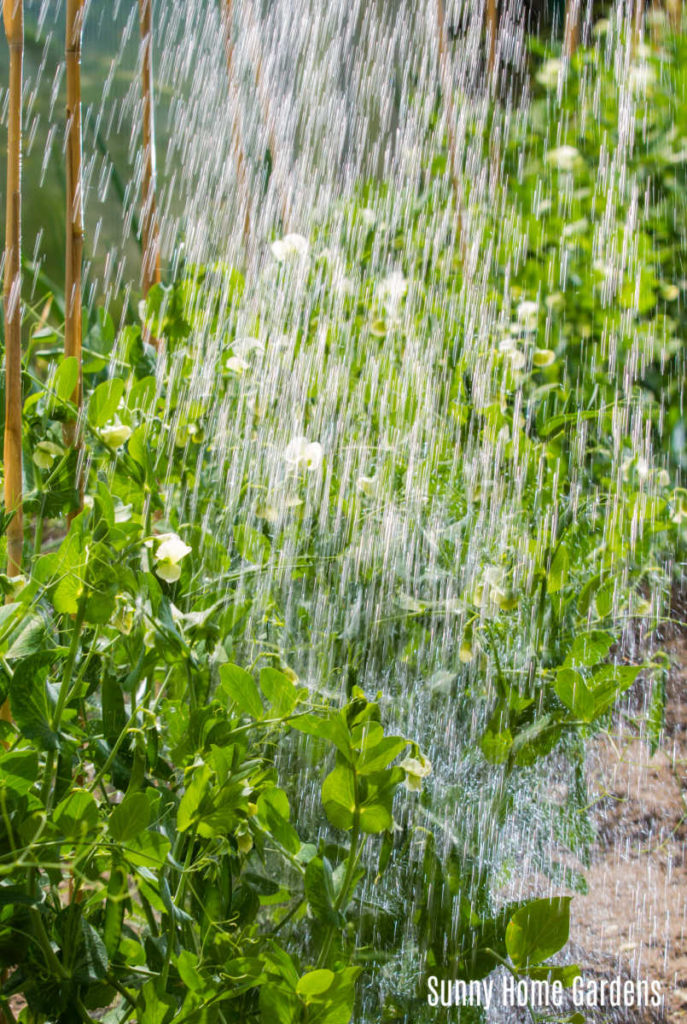
Peas require a lot of water to grow well, but they should not be drowned in too much water as that can cause fungal rot in the vulnerable roots of the pea plant.
If your peas are being grown in pots, expect to water your potted peas more often, up to three times daily. With peas you want your soil to be damp, but not soggy.
The amount of soil can also affect how often you need to water your plants.
Keep bottom leaves off of the soil by using a garden stick for each plant to encourage it to climb. This will help keep the leaves from getting too wet, which could set up conditions ripe for fungal-type plant infections.
☀️ Light Requirements
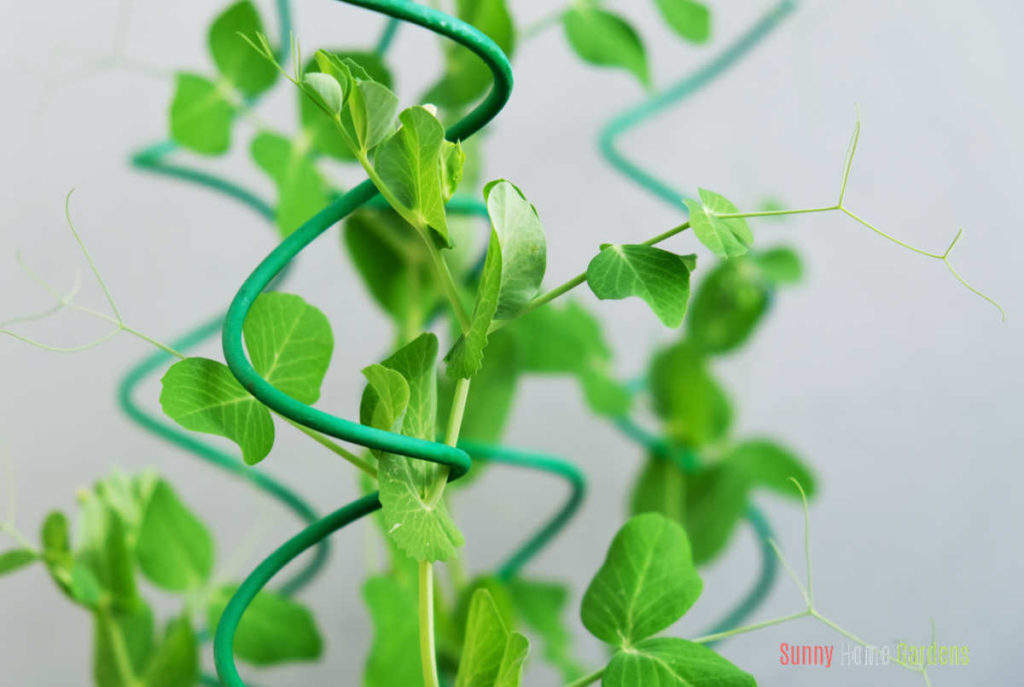
Peas like moderate shade and a fairly steady light for optimal growth.
Pea plants do tend to reach towards the light, so moderate sunlight is alright. Just make sure to protect the plant from the harsher sunrays typical with summer afternoons and move the plant into a shaded area during that time.
Fertilizer
When peas are grown in an outdoor garden space, the plant will normally create nitrogen that is crucial for soil nutrients and soil health.
In potted pea plants, it is necessary to use a good fertilizer in moderate amounts. Begin with approximately 1 tablespoon of potassium for each 2 gallons of the potting soil you will be using to plant the peas in a container.
Also, you should have on hand a regular fertilizer for general gardening purposes at a 5-10-10 mix or 20-20-20 using either a quarter or half concentration strength after the young plants have germinated 10 to 14 days and seem stable.
Since peas are usually grown for their food, many gardeners prefer organic or natural based fertilizers instead. Use rotted manure or compost 2 times during the plant’s growth cycle.
How to Grow the Peas in Containers
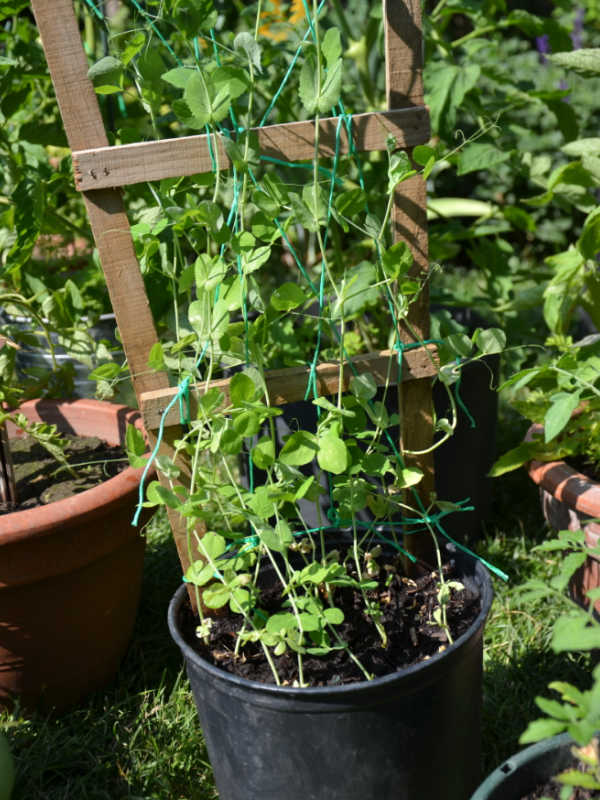
Make sure to choose the proper container.
As the roots tend to remain shallow, the pot or container of choice only has to be moderately deep with wider containers. This can include window box planters, or shallow and wide trough type containers.
Of course, if your pea plant is a taller variety, the post selected should be a bit deeper to ensure enough root stability for the taller plant. Dwarf and other smaller pea varieties can be planted in containers and pots of just 6 inches deep.
How to Grow Peas from Seeds
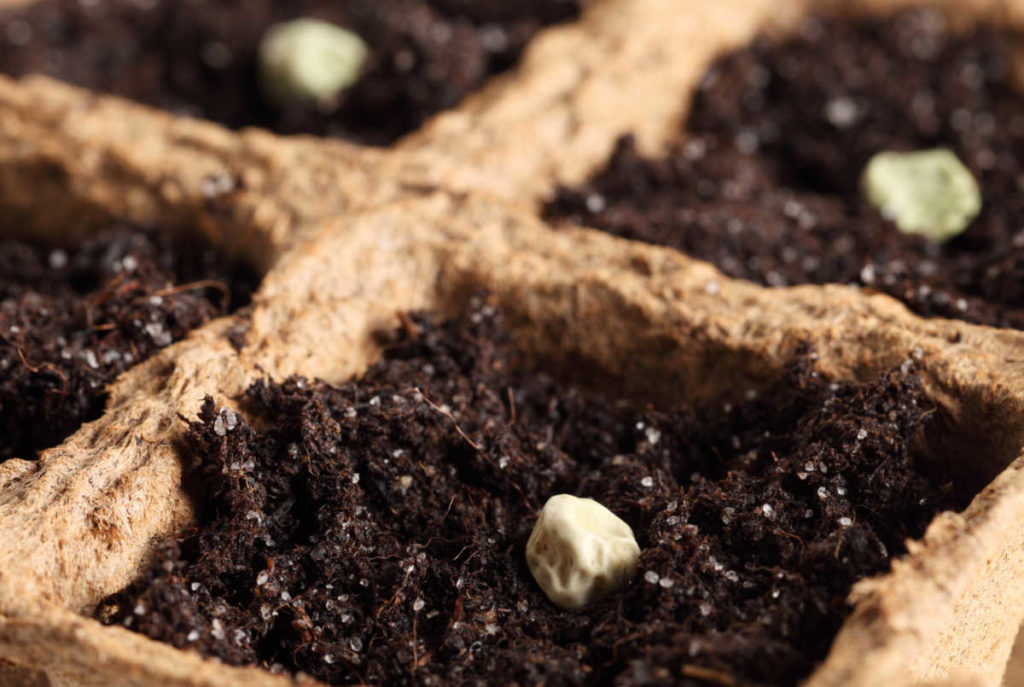
Sometimes it is better to grow peas from seeds rather than purchase a live plant from a nursery. This is not difficult, even for beginner gardening enthusiasts.
Below are some easy steps to accomplish this:
1. Find a shallow container and sow pea seeds in a seed mixture or within soil filled pots placing them apart roughly 1 to 2 inches and 1 to 2 inches deep into the potting soil.
Note: The seedlings can be transplanted when they grow to just 4 to 5 inches in height.
2. Alternately, the seeds can be scattered over the special growing medium for a bit. Then, layer a thin amount of soil over the top of the seeds covering them. Be sure to only cover with 1 inch of soil or less to ensure healthy growth.
3. Water the soil well but don’t overwater. The soil should feel moist and never soppy or too wet. Keep your potted or otherwise planted germinating seeds in either part or full sun.
4. Expect the seeds to fully germinate in a week to a month’s time. How fast the seeds germinate depends on the temperature that surrounds the peas. These seeds will germinate quicker if temperatures are above 60 degrees F.
Note: A gardening trick to speed the germination process forward consists of soaking the pea seeds in water for 24 hours before sowing them into the ground or pot. Some professional gardeners swear by spraying seaweed that has been liquified onto the seeds as a sort of pretreating process to spur faster growth.
Caring for the Peas Planted in Containers
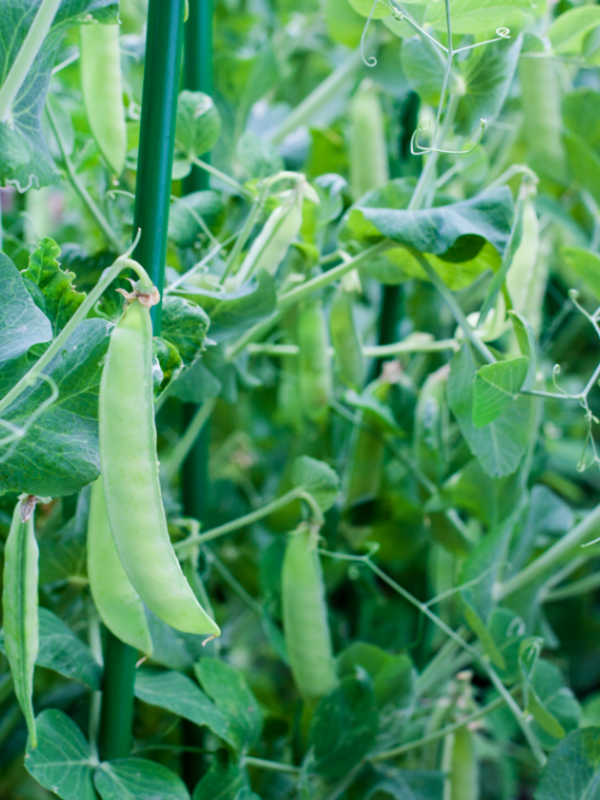
Caring for your pea plants that are growing in pots or other containers is not much different than caring for them in an outdoor garden.
There is the advantage of being able to move a potted pea plant when the sun is too hot or the temperature becomes too hot or cold.
These containers can even be moved indoors when the weather conditions outside are not favorable for the health of your tender growing plants.
Remember to water them more often, and keep lower leaves and vegetation from becoming too sodden with water. This could set the plant up for fungal infections that can be harmful to the overall health of the plant in general.
Potted plants of any kind have the risk of the soil around them washing away with the frequent watering that they require.
Add a natural fertilizer if the soil seems to be lower in nutrients than usual when doing a soil test. Watch for signs of problems by paying attention to the plant’s leaves, colors, amount and speed of growth and other factors.
It can be easier to keep potted pea plants from harmful insects that tend to thrive more in outdoor locations.
If there appears to be an infestation of insects or some type of disease, remember to carefully wash any gardening tools that are used on the infected plants before using them on other plants nearby to prevent cross contamination.
Potted peas can also be covered with a fine lightweight mesh if insects seem to be a problem or if there are other predators looking for a free meal.
Using climbing stakes for vine types of peas in a pot will encourage the plant to grow up rather than grow outwards along the ground soil.
There are many insects that could be lurking in the soil itself, and vine plants tend to be at a greater risk of developing a disease or becoming infested with insects.
Tips for Success
Don’t overwater your peas.
Bring your potted peas indoors when frost is predicted. Otherwise, cover up the plants and place them in a less windy area on colder nights.
Taller pea varieties tend to grow slower during the growing season. Dwarf varieties usually will produce an abundance of peas in a faster period of time.
Conclusion
Growing your own peas in containers or pots is an easy way to ensure a fresh supply of peas. Make sure to choose a variety of pea that your family likes to eat or one that you want to try.
Peas are one of the first vegetables to plant as they can withstand cooler temperatures than most other garden vegetables.
Freshly grown peas are more nutritious and taste better than canned or frozen varieties.
Growing peas is a great project to do with kids, even younger kids. Kids that garden tend to enjoy eating the fruits, or veggies, of their labor.
If you found this helpful, please “PIN IT”!
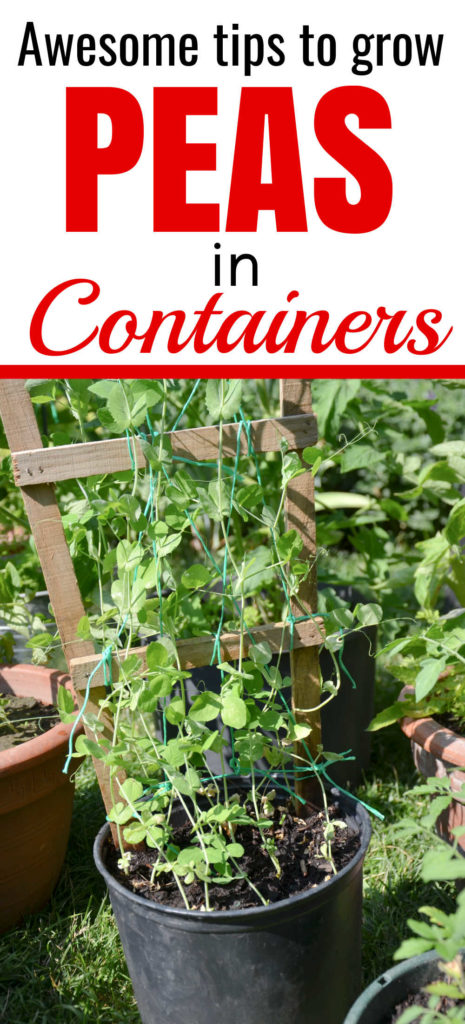
Other vegetable growing posts:
All About Varieties and Types of Peas
Best Vegetables to Grow in Containers
Tips for Growing the BEST Tomatoes in Containers
How to Grow Garlic in Containers


